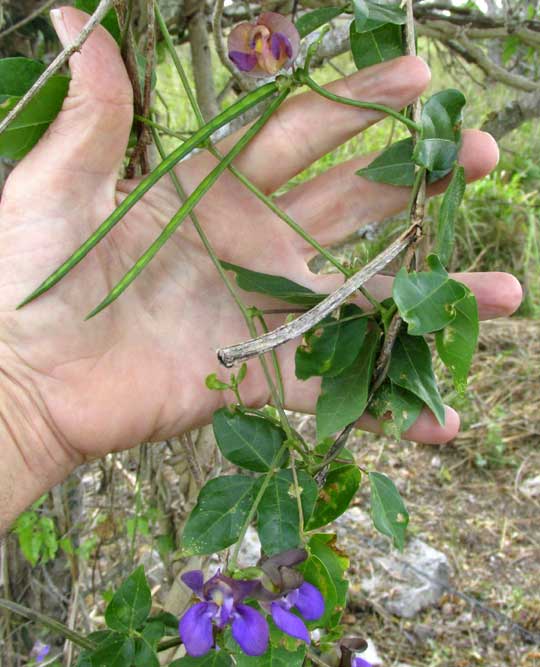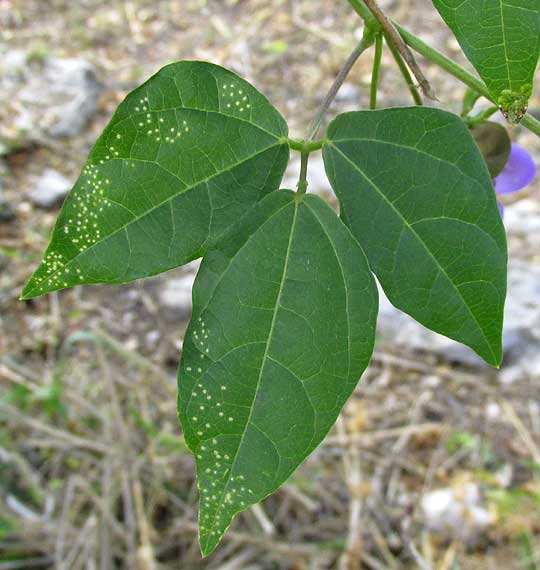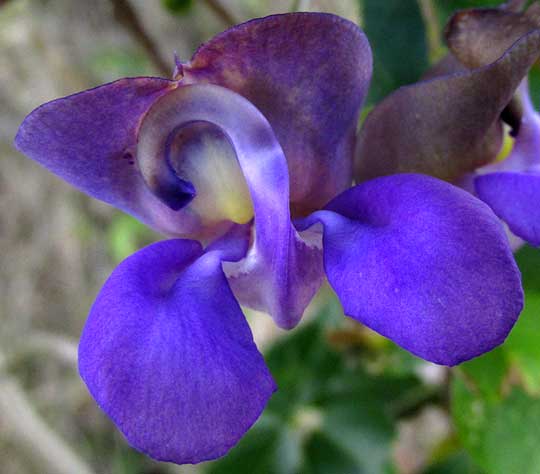Excerpts from Jim Conrad's
Naturalist Newsletter
from the March 8, 2015 Newsletter issued from Río Lagartos, on the Yucatan Peninsula's northern coast (~N21.60°, ~W88.16°), Yucatán state, MÉXICO
VIGNA CANDIDA
Out in the ranchland south of town where palm- and grass-rich savanna has been fenced in for cattle grazing, grown-over spots along the road where the cows can't reach often support interesting plants. One such plant this week has been a twining vine of the Bean Family, its long, slender, straight legumes and large, purplish flowers shown below:

Not unlike the compound leaves of a garden bean-vine, this vine's leaves are divided into three leaflets, shown below:

The pretty flowers are papilionaceous -- having a large top petal, two flaring side petals and two lower petals fused along their common margins to form a scoop-shaped "keel" -- typical of the Bean Family, but the blossoms are surprisingly boldly colored, as seen below:

This flower's bottom "keel" has elongated into a slender tube that curves upward counterclockwise. This remarkable keel helps us peg our vine as VIGNA CANDIDA. Despite its prettiness, Vigna candida just doesn't have a good English name. The genus Vigna is famous for providing several important food species, including the Adzuki Bean (Vigna angularis), the Cowpea (Vigna unguiculata), and the Mung Bean (Vigna radiata).
Our vine's flowers are more intensely colored than those of other Vigna candida pictures found on the Internet. My impression just looking at this one plant is that as the flowers age they turn lighter, and the big top petal enlarges.
Vigna candida is a widely distributed species, found from southern Mexico south through Central America into the northern half of South America. With such a nice bean pod developing, you'd think the beans might be edible. However, I find no traditional uses for the vine other than as a forage plant for livestock.